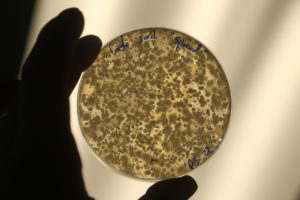By Jonathan Plehn
President,
Huma®, Inc.
 I am extremely proud to officially unveil our company’s new branding and name. We are now Huma®– a 50-year-old legacy ready to be reintroduced to the world! It is a strategic decision to shorten our name from Bio Huma Netics® (BHN) to Huma® and we are confident that this progressive move is in our company and our customers’ best interests. [Read more…]
I am extremely proud to officially unveil our company’s new branding and name. We are now Huma®– a 50-year-old legacy ready to be reintroduced to the world! It is a strategic decision to shorten our name from Bio Huma Netics® (BHN) to Huma® and we are confident that this progressive move is in our company and our customers’ best interests. [Read more…]

 I’m excited to share that Bio Huma Netics, Inc. (BHN) has acquired an additional building in Arizona. It’s a significant milestone for us that not only testifies to the continual progress we’re making as a company but will also serve as a building block for future expansions.
I’m excited to share that Bio Huma Netics, Inc. (BHN) has acquired an additional building in Arizona. It’s a significant milestone for us that not only testifies to the continual progress we’re making as a company but will also serve as a building block for future expansions.  In a research study, originally published in Frontiers in Plant Science, May 2021, Vol. 12:660224, the biostimulant properties of humic acid (HA) were tested on Micro Tom tomato plants under increasing nutritional stress. The results confirmed the positive role humic acids play in enhancing nutrient efficiency uptake in plants.
In a research study, originally published in Frontiers in Plant Science, May 2021, Vol. 12:660224, the biostimulant properties of humic acid (HA) were tested on Micro Tom tomato plants under increasing nutritional stress. The results confirmed the positive role humic acids play in enhancing nutrient efficiency uptake in plants. We are accustomed to seeing humic substances (humic and fulvic) in dry/granular form, and we tend to think of acids as liquids. So why are humic and fulvic substances called acids?
We are accustomed to seeing humic substances (humic and fulvic) in dry/granular form, and we tend to think of acids as liquids. So why are humic and fulvic substances called acids? To help increase awareness about sustainable agriculture production, Bio Huma Netics, Inc., (BHN) is sponsoring a FarmProgress course for Certified Crop Advisers (CCAs) and Pest Control Advisers (PCAs) in the United States and Canada.
To help increase awareness about sustainable agriculture production, Bio Huma Netics, Inc., (BHN) is sponsoring a FarmProgress course for Certified Crop Advisers (CCAs) and Pest Control Advisers (PCAs) in the United States and Canada. Most of the work on agricultural applications of humic substances (HS) has focused on their biostimulant effects on plants. Far less work has been conducted on the effects of HS on soil microbial populations. It’s not surprising to learn, from the few studies that have been published, that HS also stimulate the growth of soil bacteria, even the bacteria that inhabit earthworm digestive tracts. One of the most important discoveries is that many species of soil bacteria are able to grow on humic acid (HA) as their sole carbon source (
Most of the work on agricultural applications of humic substances (HS) has focused on their biostimulant effects on plants. Far less work has been conducted on the effects of HS on soil microbial populations. It’s not surprising to learn, from the few studies that have been published, that HS also stimulate the growth of soil bacteria, even the bacteria that inhabit earthworm digestive tracts. One of the most important discoveries is that many species of soil bacteria are able to grow on humic acid (HA) as their sole carbon source (
 When applied fertilizers benefit soil health and plant growth, and are readily available to them, it is said that they are bioavailable. The extent of bioavailability of nutrients and fertilizers applied to soil and plants determines their effectiveness in improving soil health and crop yield.
When applied fertilizers benefit soil health and plant growth, and are readily available to them, it is said that they are bioavailable. The extent of bioavailability of nutrients and fertilizers applied to soil and plants determines their effectiveness in improving soil health and crop yield.